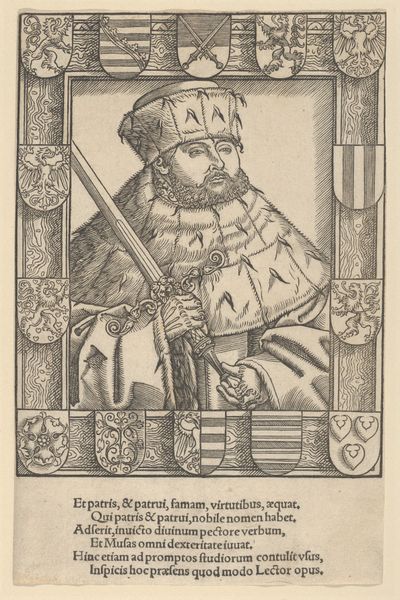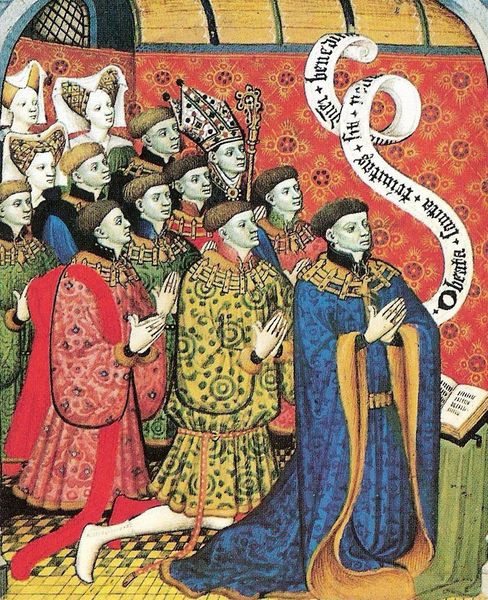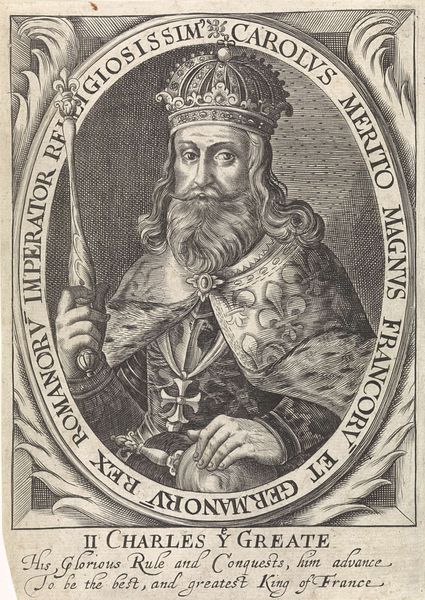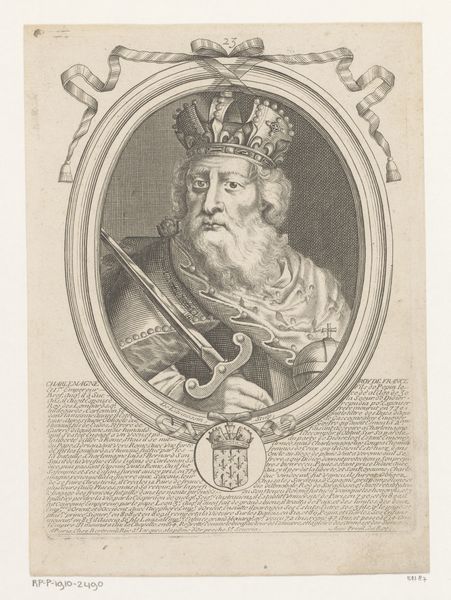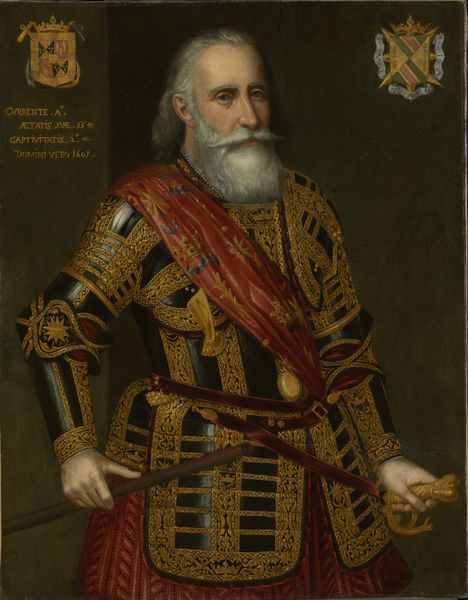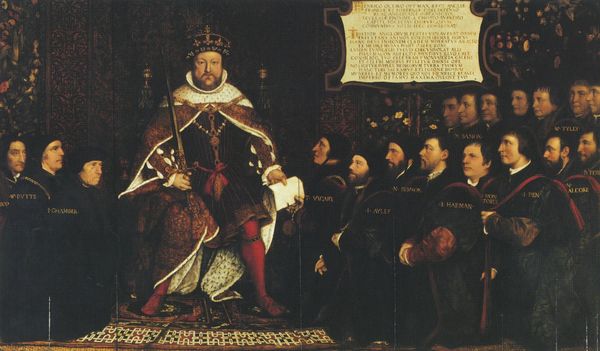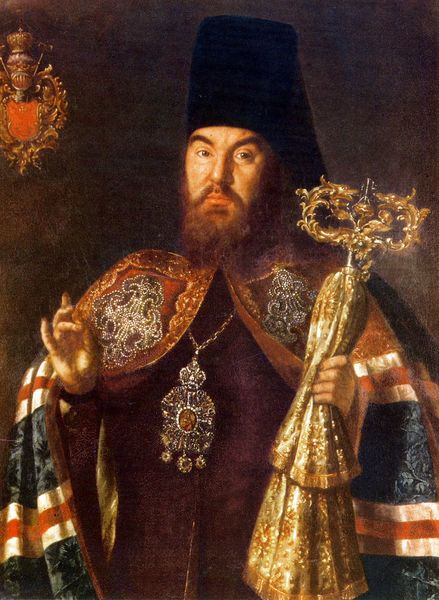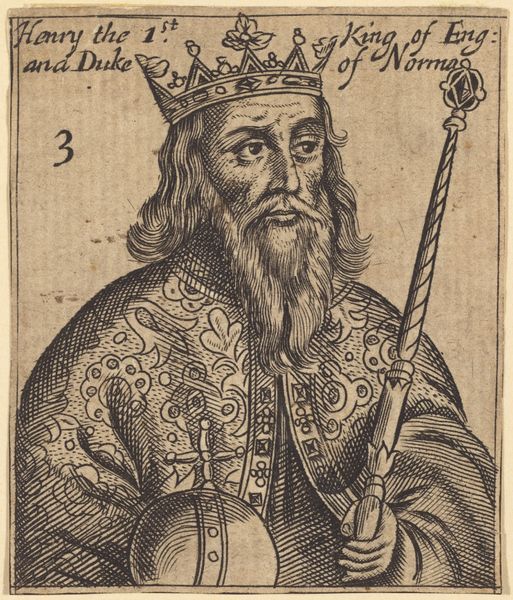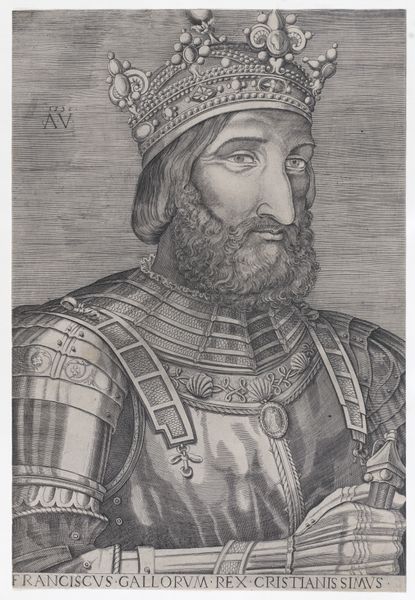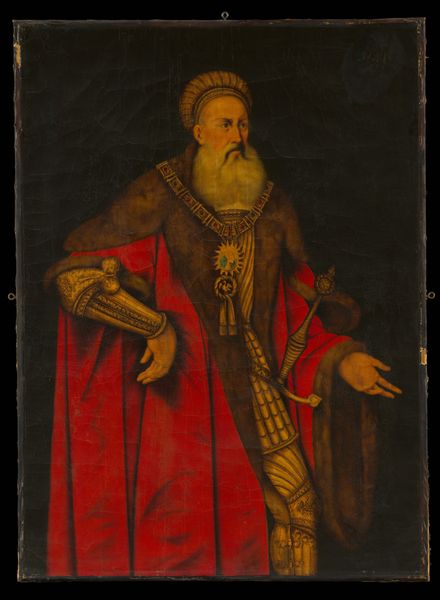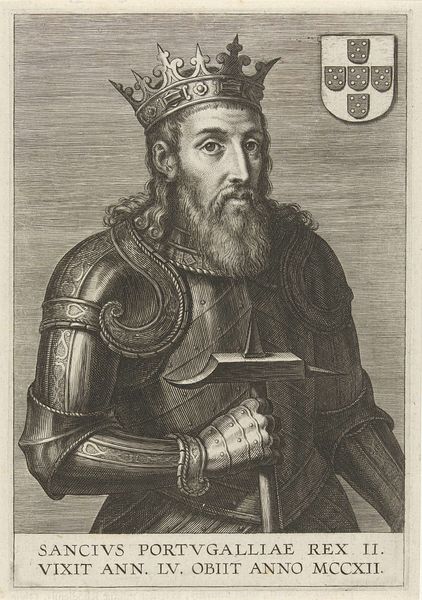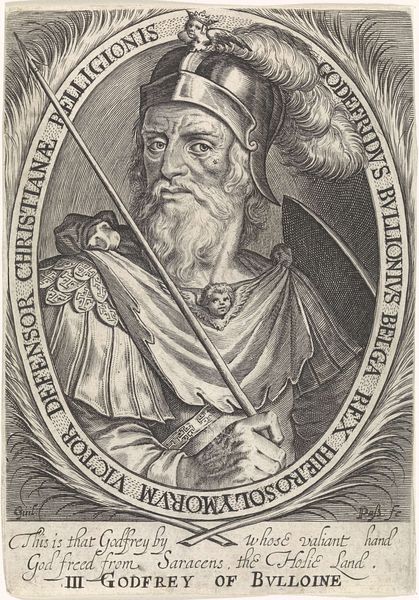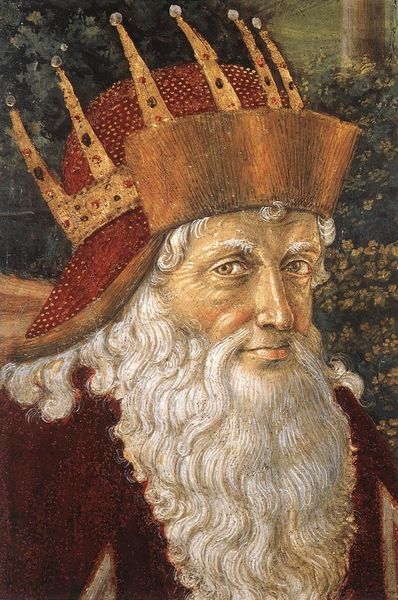
painting, oil-paint
#
portrait
#
painting
#
oil-paint
#
figuration
#
11_renaissance
#
oil painting
#
history-painting
#
northern-renaissance
Copyright: Public domain
Editor: We're looking at "Emperor Charlemagne and Emperor Sigismund," a 1512 oil painting by Albrecht Durer. It's quite striking; the two emperors seem almost encased in their elaborate garments. The sheer amount of detail is astonishing! How do you read this piece, considering Durer's artistry? Curator: Let's consider this diptych through a Formalist lens, analyzing the visual construction and symbolic representation of power. Note the symmetry. The figures mirror each other formally – pose, attire, placement – yet subtle differences, like the contrasting sword and scepter, underscore unique facets of their authority. The painting uses a highly symbolic and stylized representation of power, which aligns with Renaissance notions of order and idealization. Observe how Durer meticulously renders the intricate textures and patterns of the imperial robes, directing the viewer's gaze and underscoring the opulence of the imperial figures. Do you notice how these robes and the gold ornaments around their figures, against the stark backgrounds, function within the composition? Editor: I see how the backgrounds emphasize their figures. What about the coats-of-arms and inscriptions surrounding the figures? Curator: The inclusion of coats-of-arms acts as framing devices which work structurally by layering symbolic meaning within a historical portraiture tradition. This layering of semiotic elements within a well-organized structure, reinforces notions of legitimacy. Consider how he balances realistic portraiture with symbolic language in the overall formal scheme. Editor: So the arrangement isn't just decorative. The placement and rendering amplify power by combining realism and symbolism within defined space. It’s quite persuasive! Curator: Precisely. By understanding this, we gain insights into the relationship between art, power, and Renaissance ideals. Editor: It reframes how I see art from that period. Thank you.
Comments
No comments
Be the first to comment and join the conversation on the ultimate creative platform.
